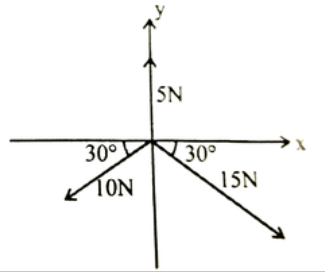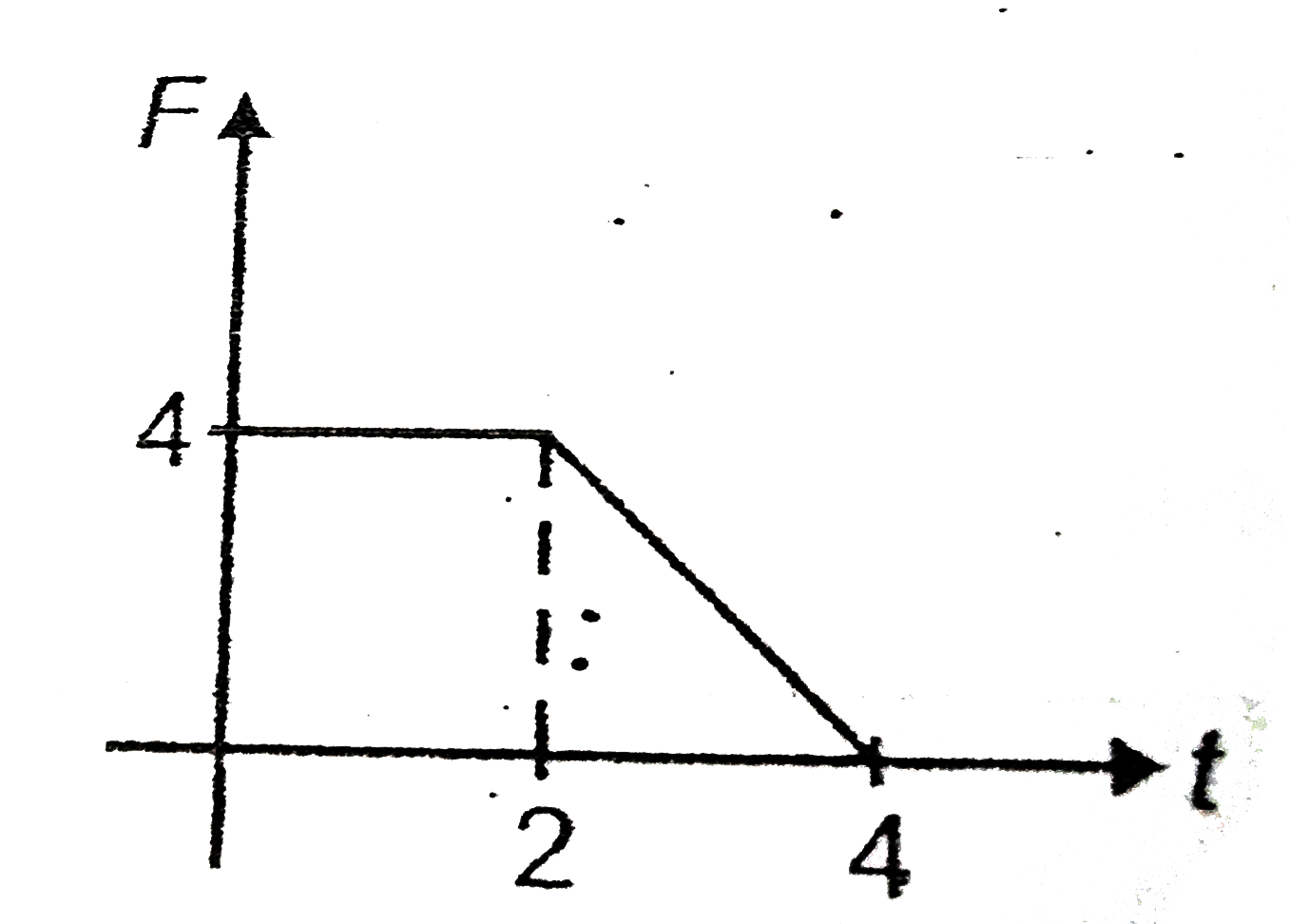Three forces acting on a body are shown in figure. To have the resultant force only along the y-directon, the magnitude of the minimum additional force needed si

0.5N
1.5N
√34N
√3N
The correct Answer is:A
(a) Minimum additional force needed
F=−(Fresultant)x
Fresultant=[(4−2)(cos30jˆj−sin30ˆi)+(cos60ˆi+sin60ˆj)]
=[2(√32ˆj−12ˆi)+(12ˆi+√32ˆj)]
=[(√3+√32)ˆj+(−ˆi+ˆi2)]
=[−12ˆi+3√32ˆj]=−12+3√32ˆj
⇒Fx=(−ˆi2)
Hence, |F|=0.5N
Topper's Solved these Questions
- BOOK - DC PANDEY ENGLISHCHAPTER - LAWS OF MOTIONEXERCISE - Check point 5.320videos
LAWS OF MOTION
- BOOK - DC PANDEY ENGLISHCHAPTER - LAWS OF MOTIONEXERCISE - Check point 5.420videos
LAWS OF MOTION
- BOOK - DC PANDEY ENGLISHCHAPTER - LAWS OF MOTIONEXERCISE - Check point 5.120videos
LAWS OF MOTION
- BOOK - DC PANDEY ENGLISHCHAPTER - KINEMATICS 1EXERCISE - INTEGER_TYPE15videos
KINEMATICS 1
- BOOK - DC PANDEY ENGLISHCHAPTER - LAWS OF THERMODYNAMICSEXERCISE - Level 2 Subjective18videos
LAWS OF THERMODYNAMICS
Similar Questions
Four forces are acting on a body as shown in figure. The magnitude of resultant of the forces is
View SolutionFind the magnitude of the resultant of shown forces :-
 View Solution
View SolutionTwo forces, each equal to F, act as shown in (figure) Their resultant is
 View Solution
View SolutionA force F is acted on a body as shown in the figure. Find the impulse of the force in first four seconds.
 View Solution
View SolutionThree forces are acting on a body to make it in equilibrium , which set can not do it ?
View SolutionTwo forces of 4 dyne and 3 dyne act upon a body. The resultant force on the body can only be –
View SolutionTwo equal forces are acting at a point with an angle 60∘ between them. If the resultant force is equal to 4√3N, the magnitude of each force is
View SolutionIf the external forces acting on a system have zero resultant, the centre of mass
View SolutionA wires PQRS carrying a current I runs along three edges of a cube of side l as shown in figure. There exists a uniform magnetic field of magnitude B along one of the sides of cube. The magnitude of the force acting on the wire is
 View Solution
View SolutionPower of a force acting on a block varies with time t as shown in figure. Then, angle between force acting on the block and its velocity is
 View Solution
View Solution

